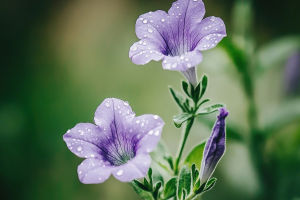Hi Lykkers! Let's take a moment to appreciate a miracle that happens silently around us every day: plants lifting water from the soil all the way up to their tallest leaves—sometimes dozens of meters high!
This invisible journey, powered by a process called transpiration, is how water travels through a plant, nourishes it, and eventually escapes into the air as vapor.
This guide unpacks how water moves inside plants, from the roots underground to the fluttering tips of their leaves. You'll also discover how evaporation helps drive this upward stream and why it's a crucial part of a plant's survival strategy. So if you've ever been curious about how a leafy tree hydrates itself, you're about to get the full picture.
Part 1: From Soil to Stem
Let's start at the bottom—with how plants first absorb water and begin the upward flow.
Roots: The Silent Collectors
Think of roots as a plant's built-in water scouts. They reach deep into the soil, pulling in water along with important nutrients. When you water a plant, you're not just giving it a drink—you're handing it the raw ingredients for everything from photosynthesis to cooling.
This water enters through tiny root hairs and moves into the plant's xylem, which you can picture as a system of fine straws running up the stem. These straws don't pump in the way a machine might. Instead, they rely on water's natural ability to stick together—what scientists call cohesion.
The Xylem Highway
Now here's where it gets interesting. Once inside the xylem, water climbs upward thanks to the pull of evaporation happening up at the leaves. The column of water moves as one continuous stream. Each drop helps tug the next, a bit like hikers pulling one another up a rope. No motors. No moving parts. Just nature being clever.
This journey is smooth but sensitive. If the roots dry out or the air becomes too dry, the whole process can slow down. That's why shade, humidity, and regular watering help your garden thrive.
Part 2: Leaves in the Lead
Now that water's made it up the stem, it reaches the leaves—where the magic of transpiration completes the loop.
Stomata: Tiny Breathable Doors
If you peeked under a leaf with a microscope, you'd see hundreds of little openings called stomata. These tiny pores open and close depending on what the plant needs. They let carbon dioxide in for photosynthesis, but they also allow water to exit as vapor.
When water evaporates from these pores, it creates a sort of vacuum that gently pulls more water upward from the roots. This is the engine of transpiration—evaporation that fuels a one-way water elevator.
Why Plants Let Water Go
You might wonder—why would plants let precious water escape into the air? The answer is balance. Transpiration cools plants on hot days, helps pull minerals from the soil, and keeps cells firm and functional. It's not wasteful; it's strategic.
You can actually see this in action. On a warm day, touch a leaf, and you might feel a hint of dampness. That's not sweat—it's the plant working to stay cool and steady, using water like a built-in climate control system.
So, Lykkers, the next time you see a tree swaying or a houseplant stretching toward the light, know that water is traveling silently through every part of it. From the soil through roots, up the xylem, and out through the leaves—each step matters.
Transpiration is nature's way of moving water with no pumps, no wires, and no fuss. It's simple, elegant, and essential. And now that you've walked the path from root to leaf, maybe watering your plants will feel a little more like participating in a tiny, leafy miracle.


